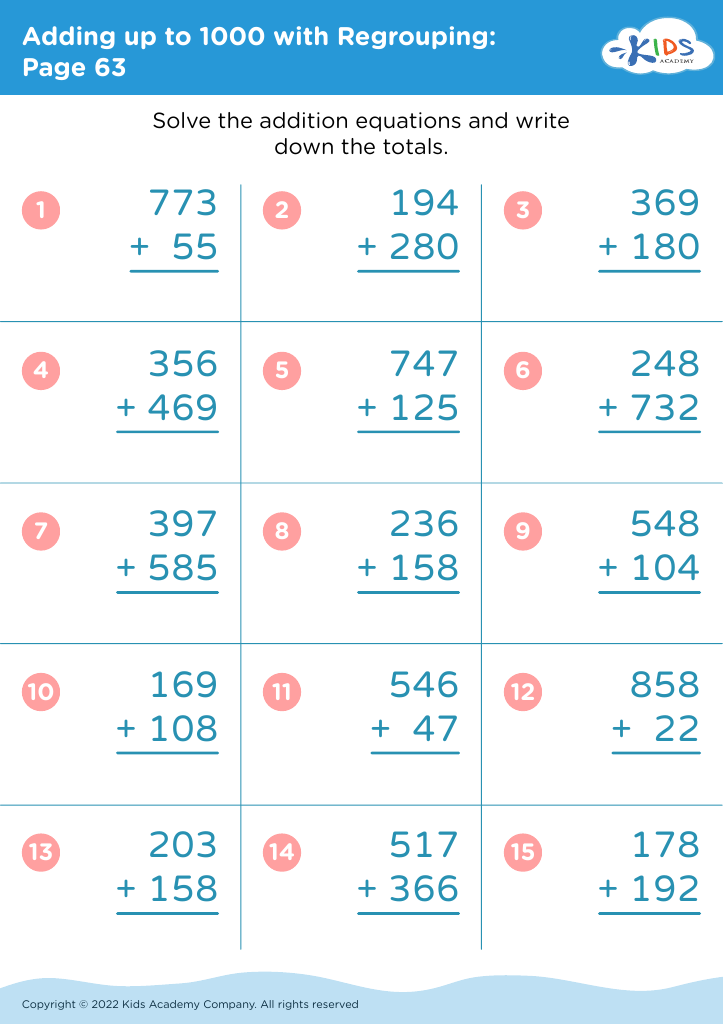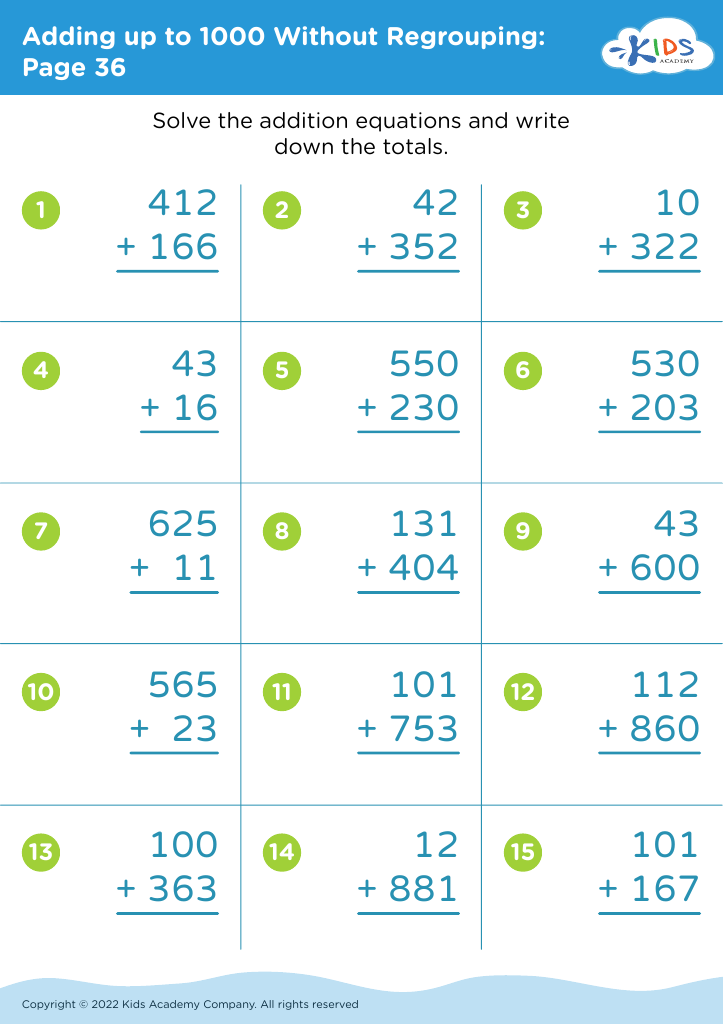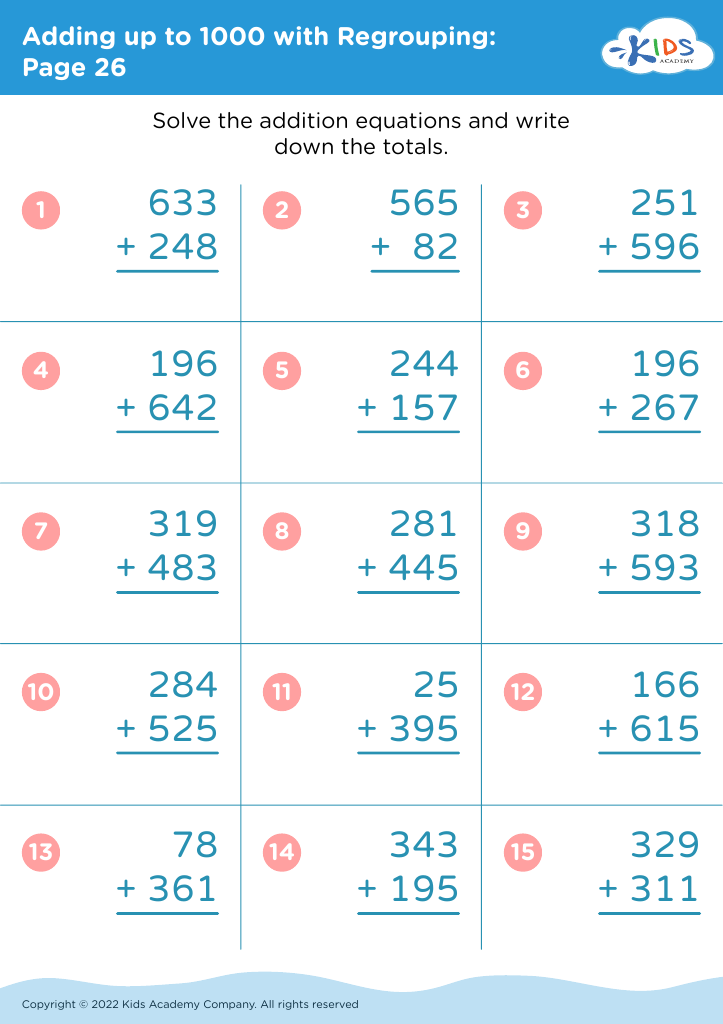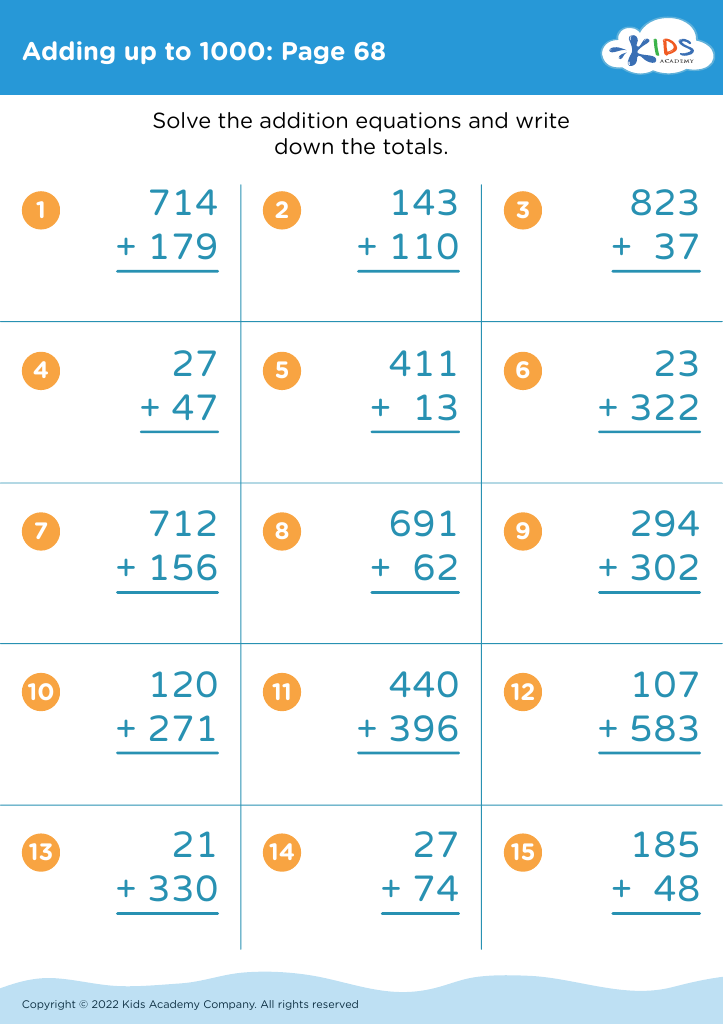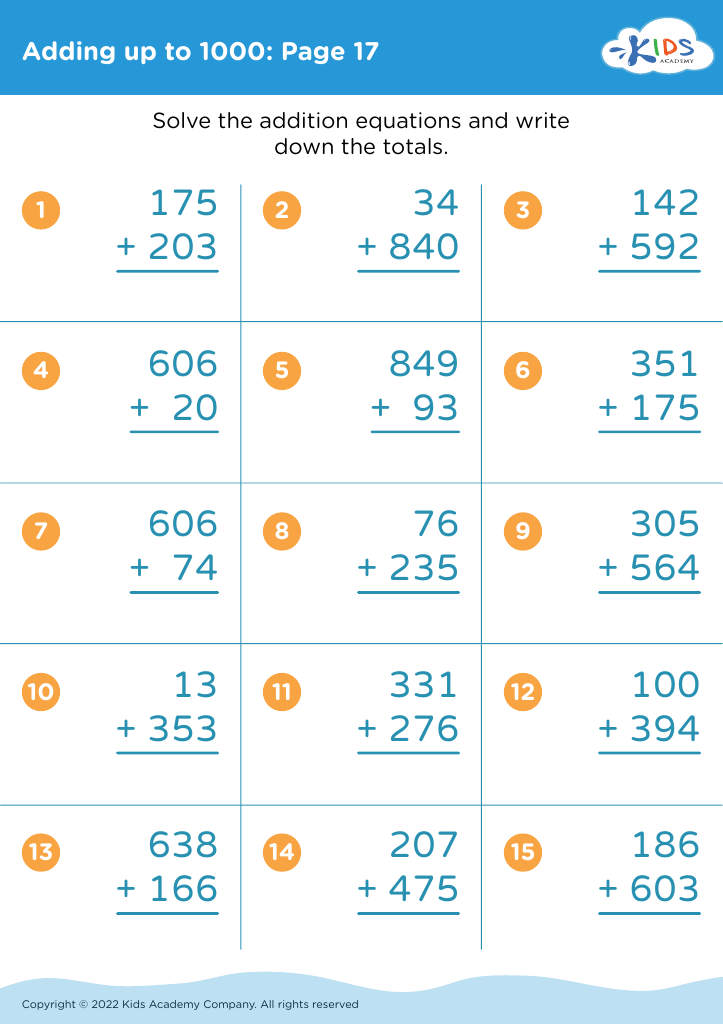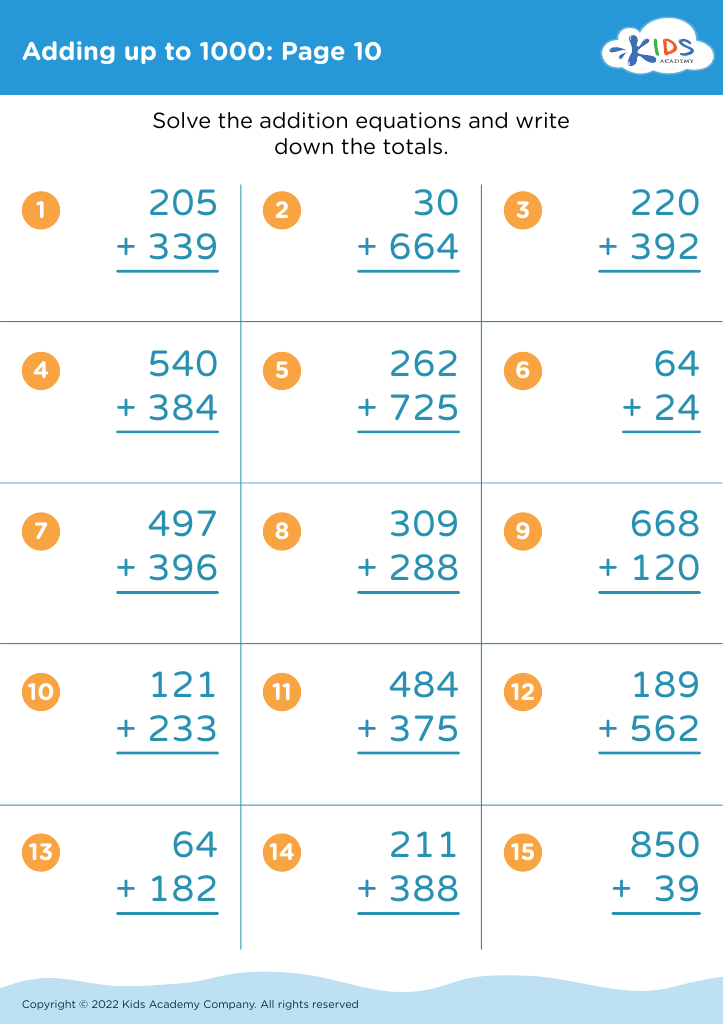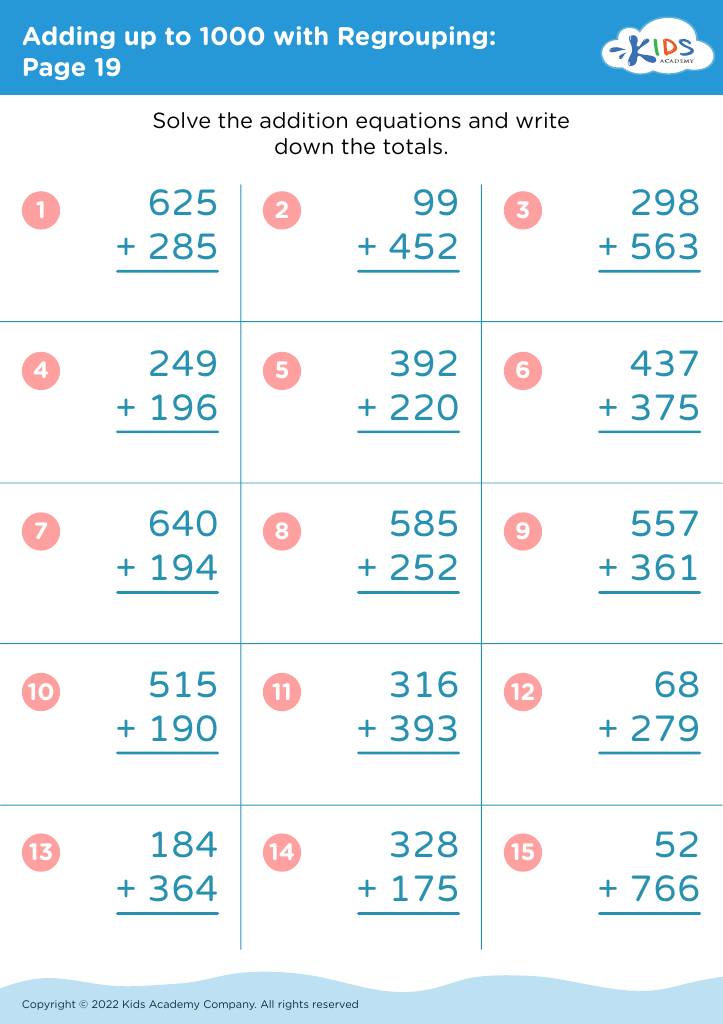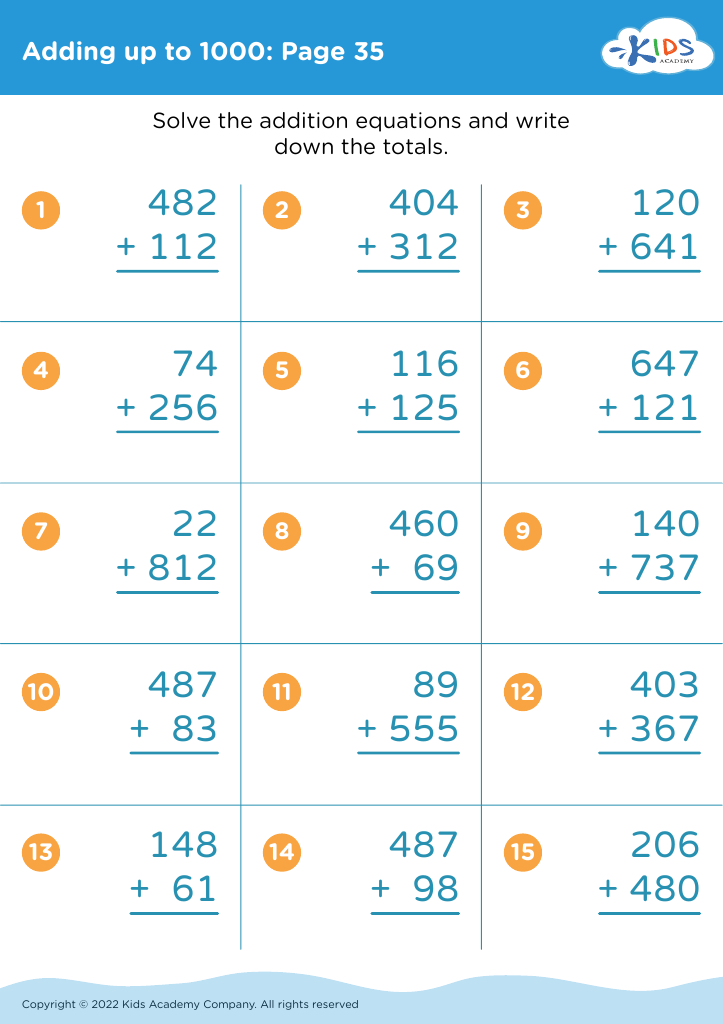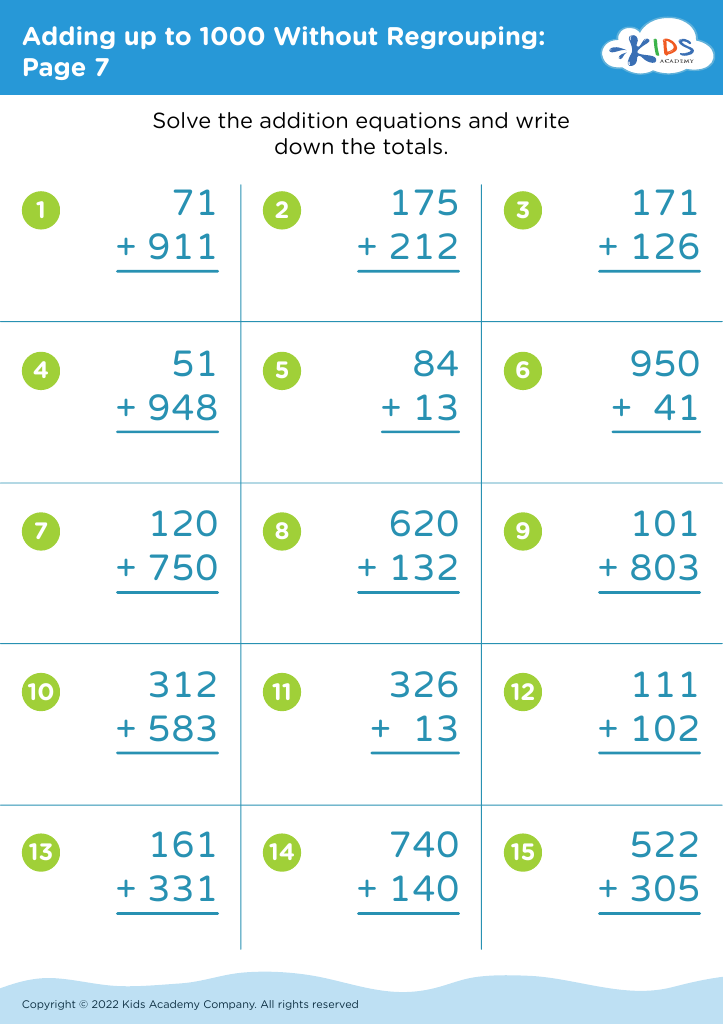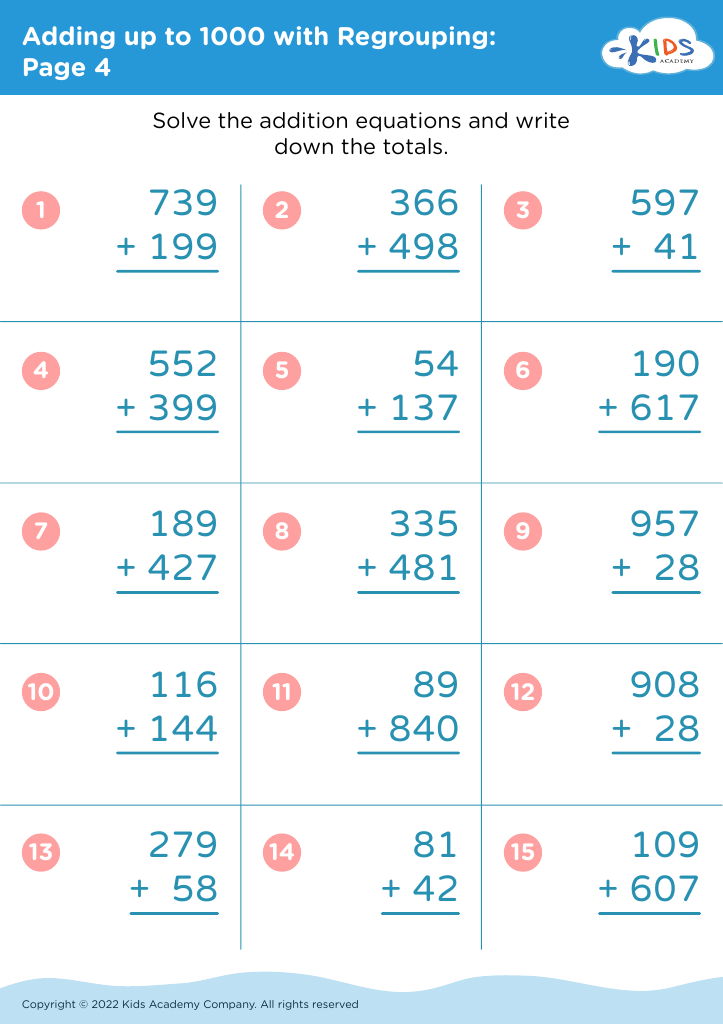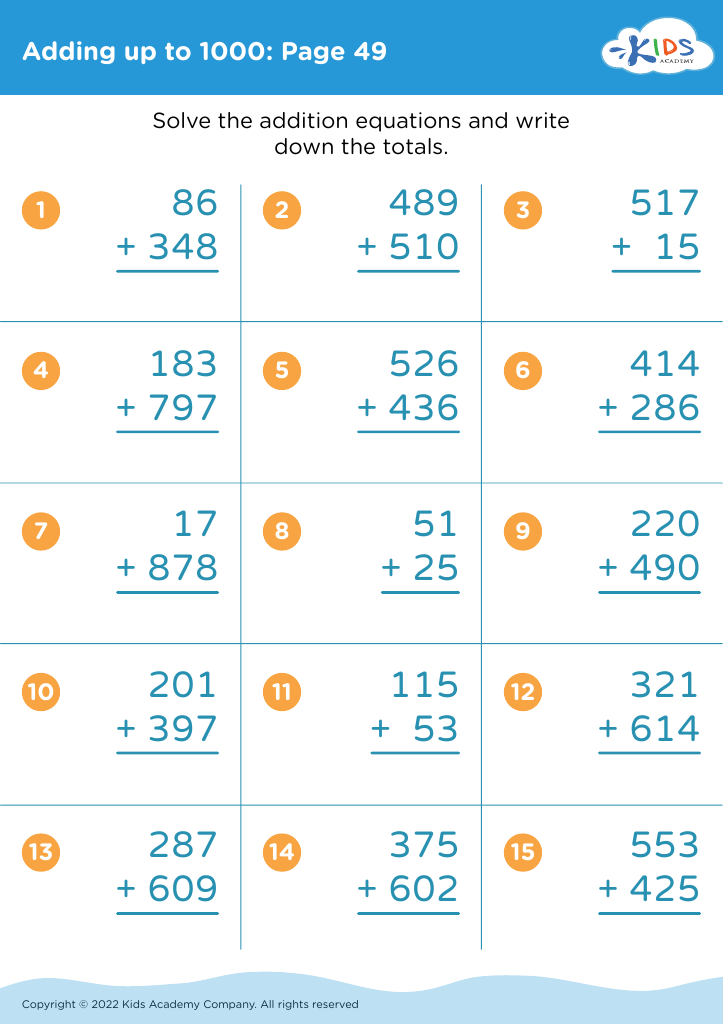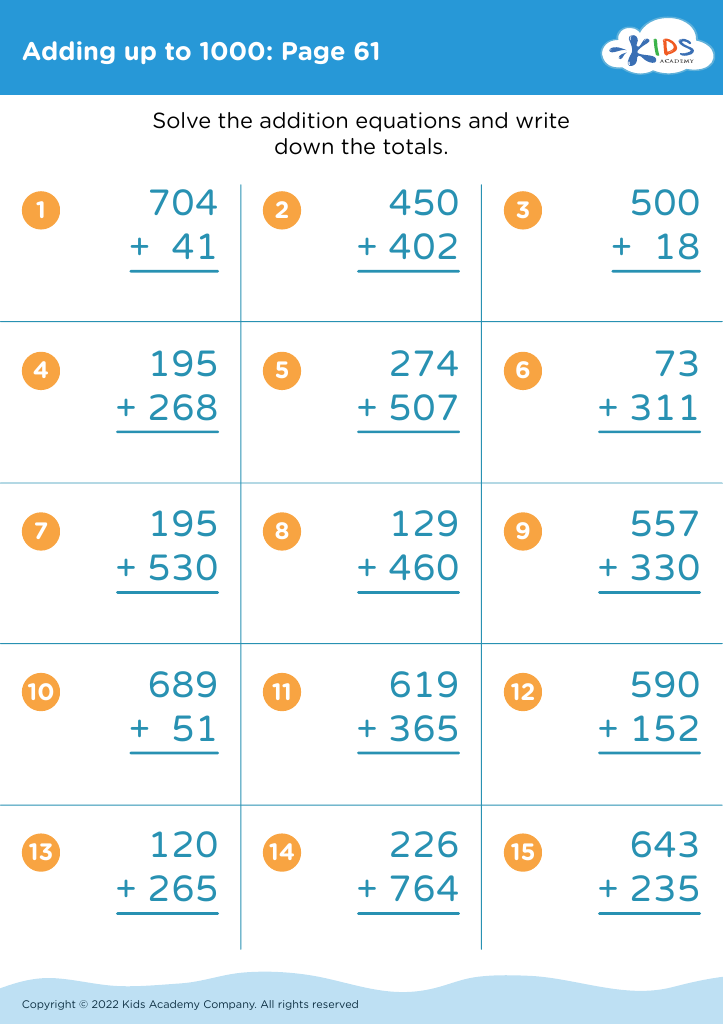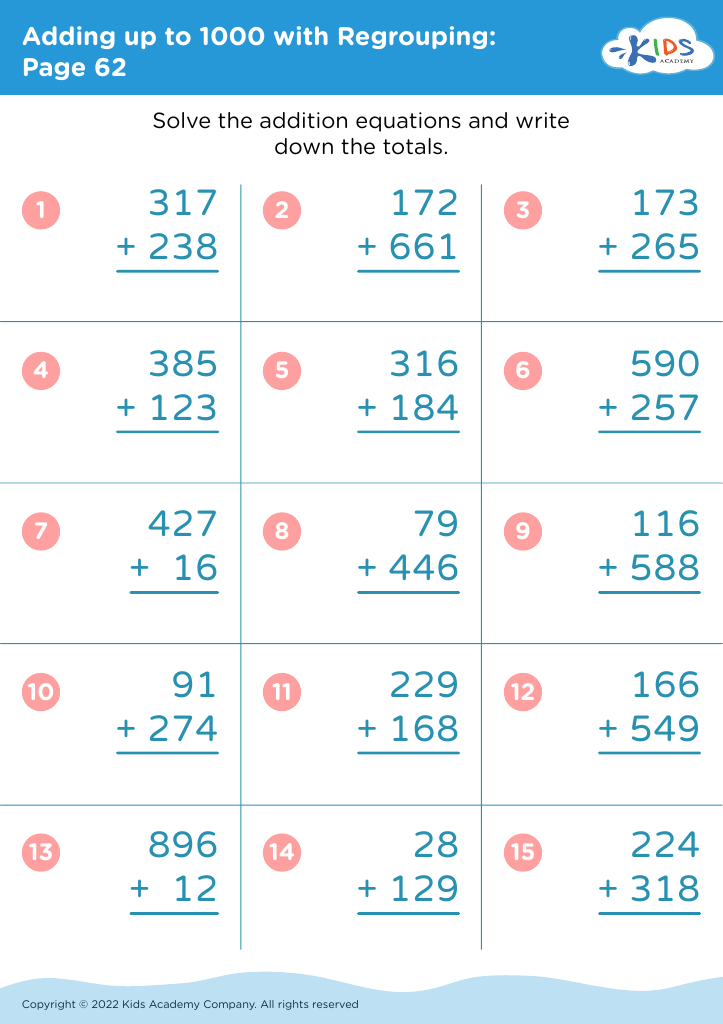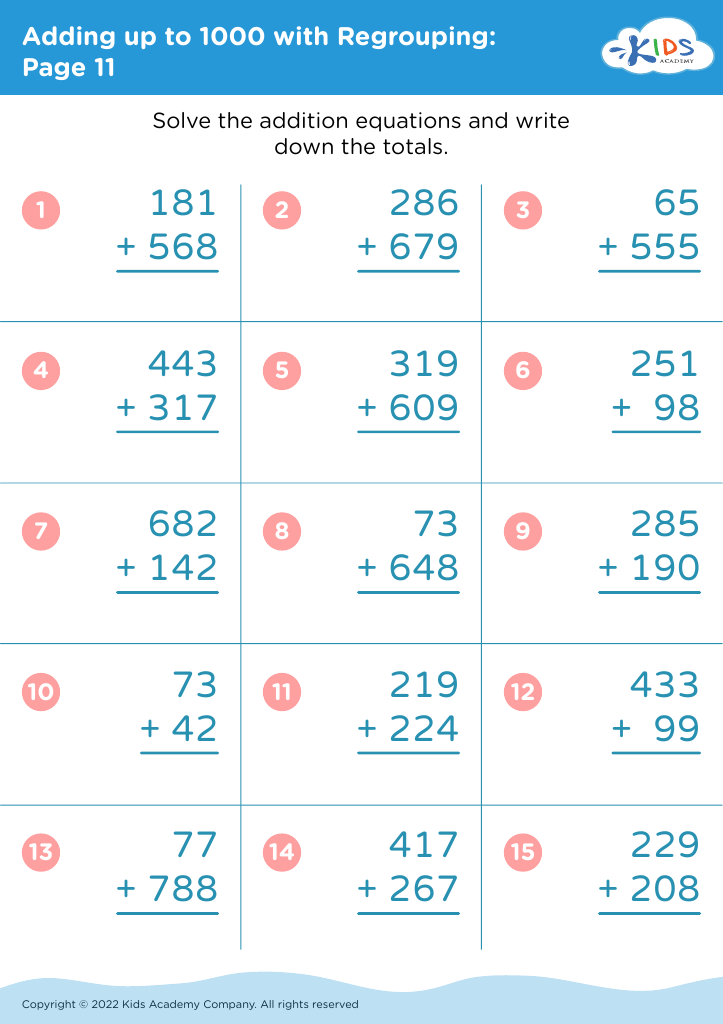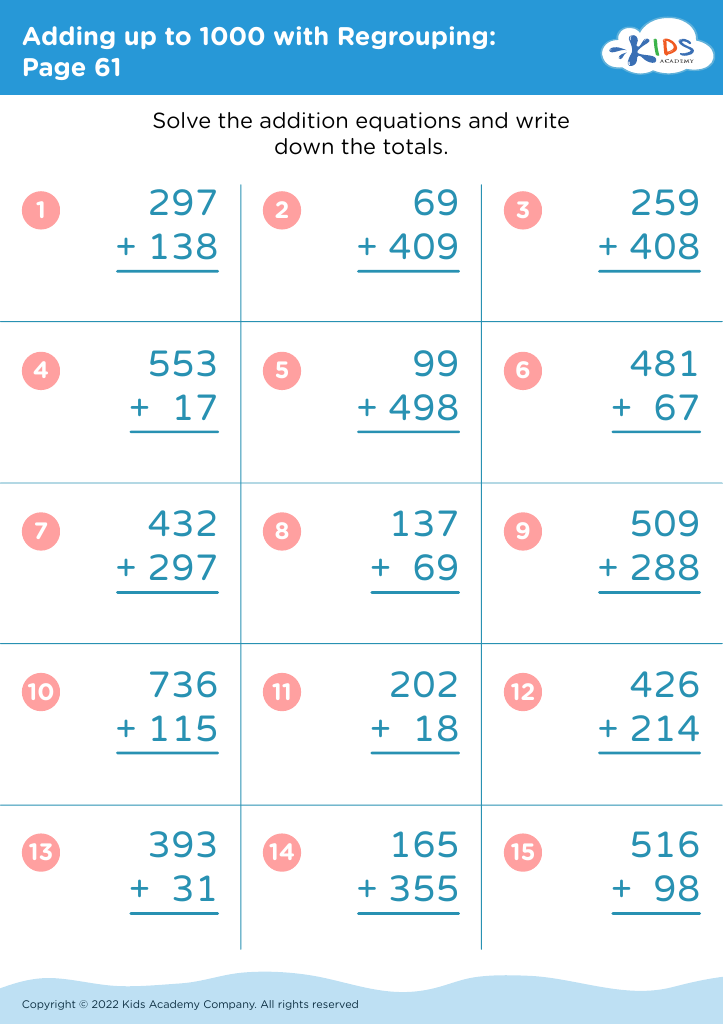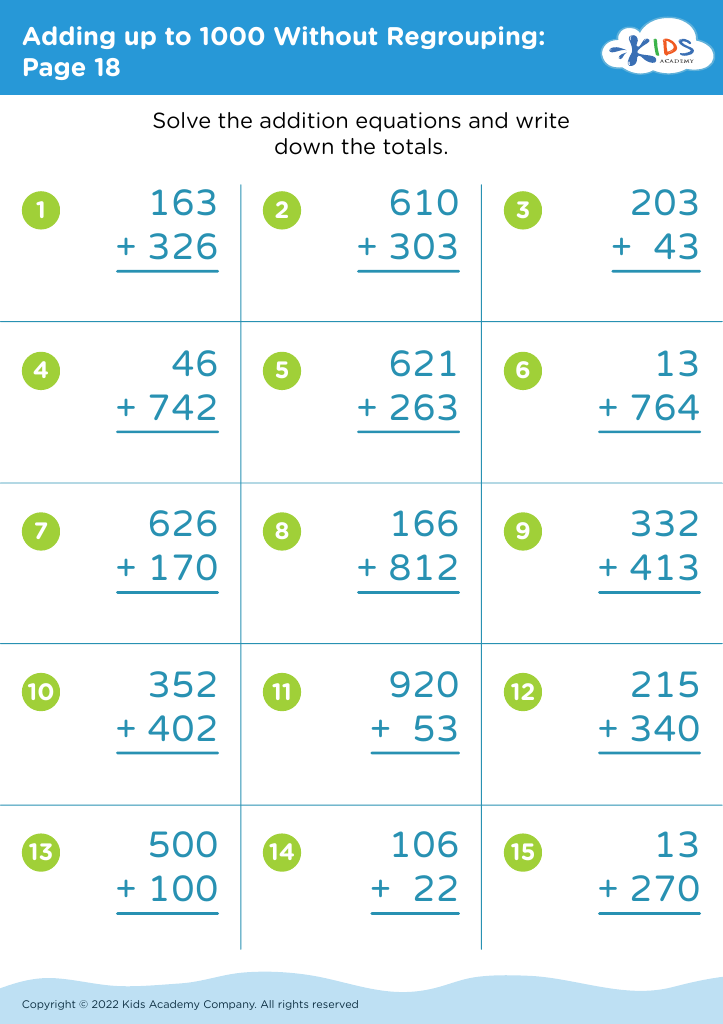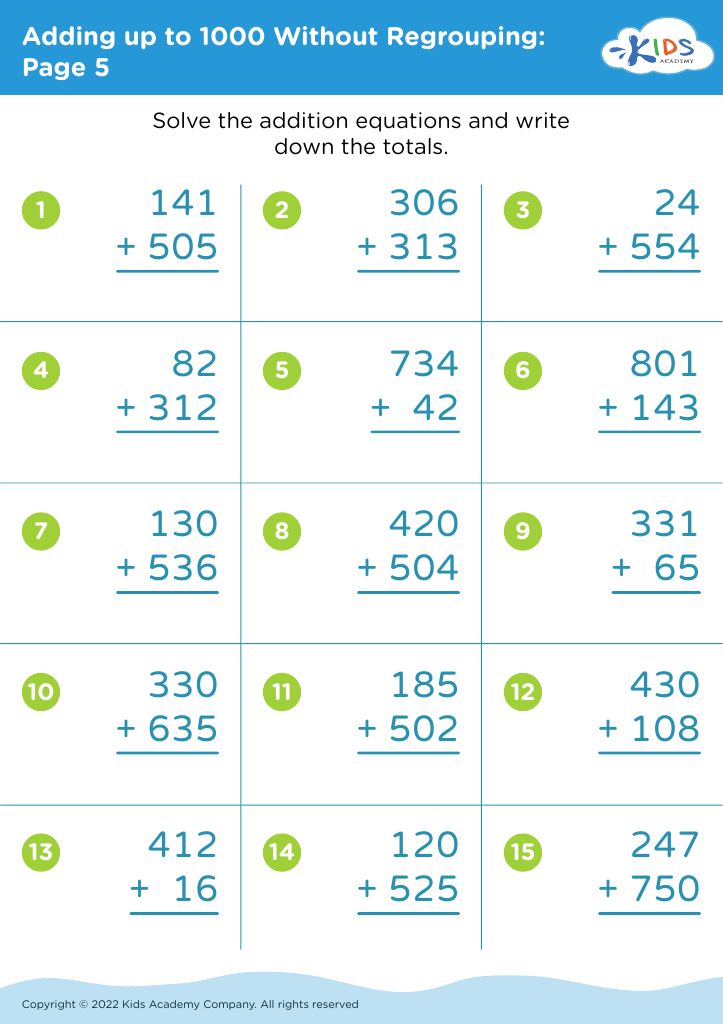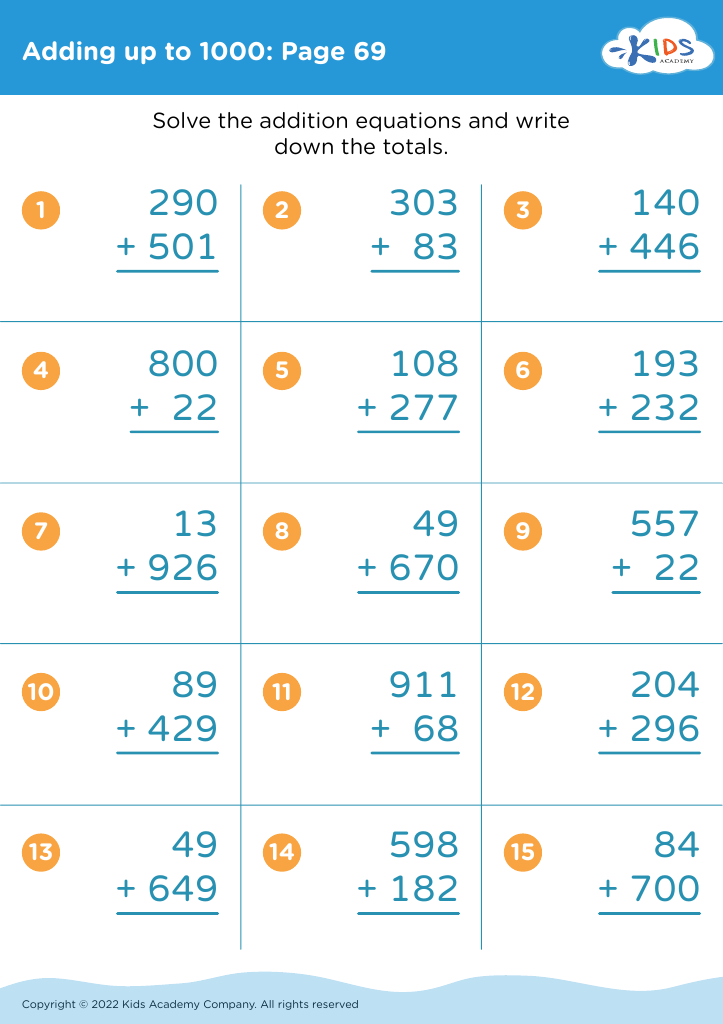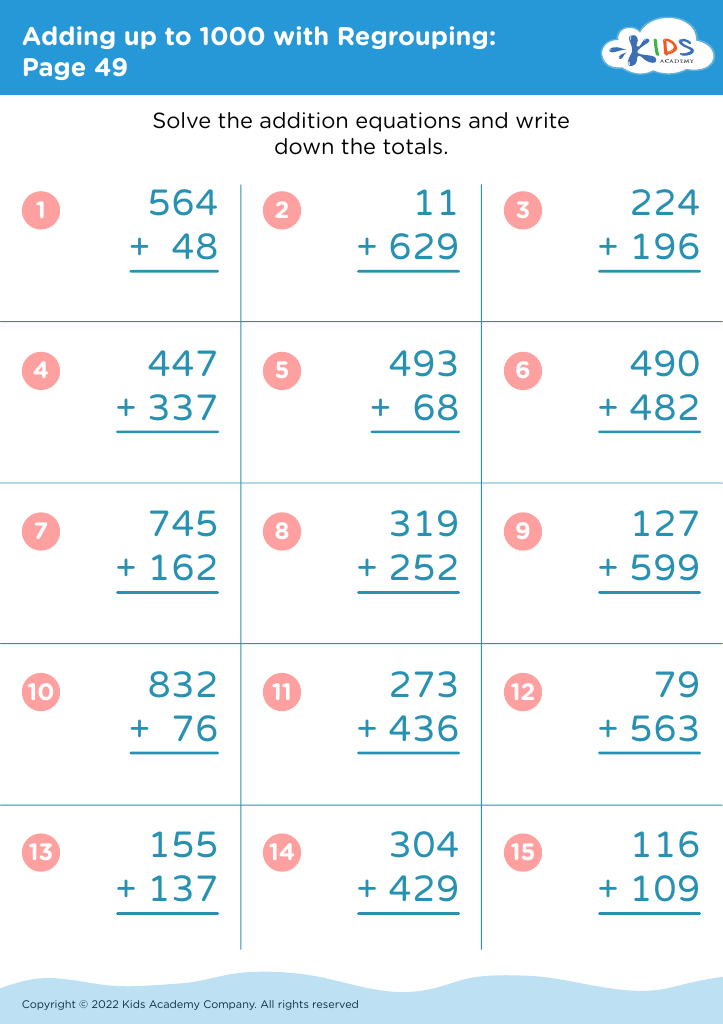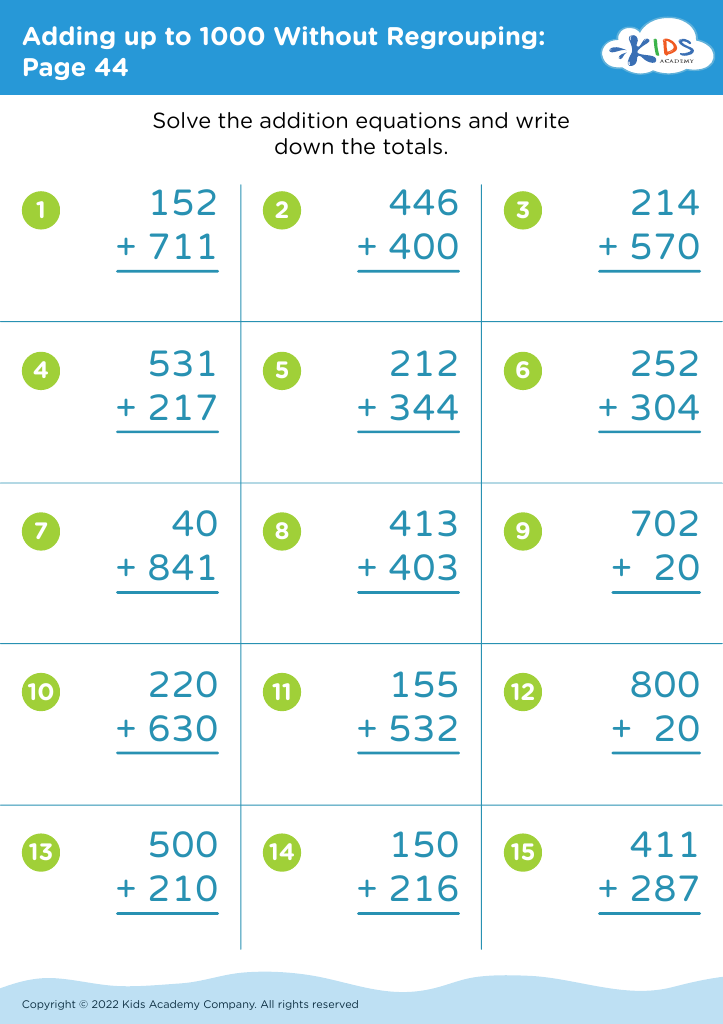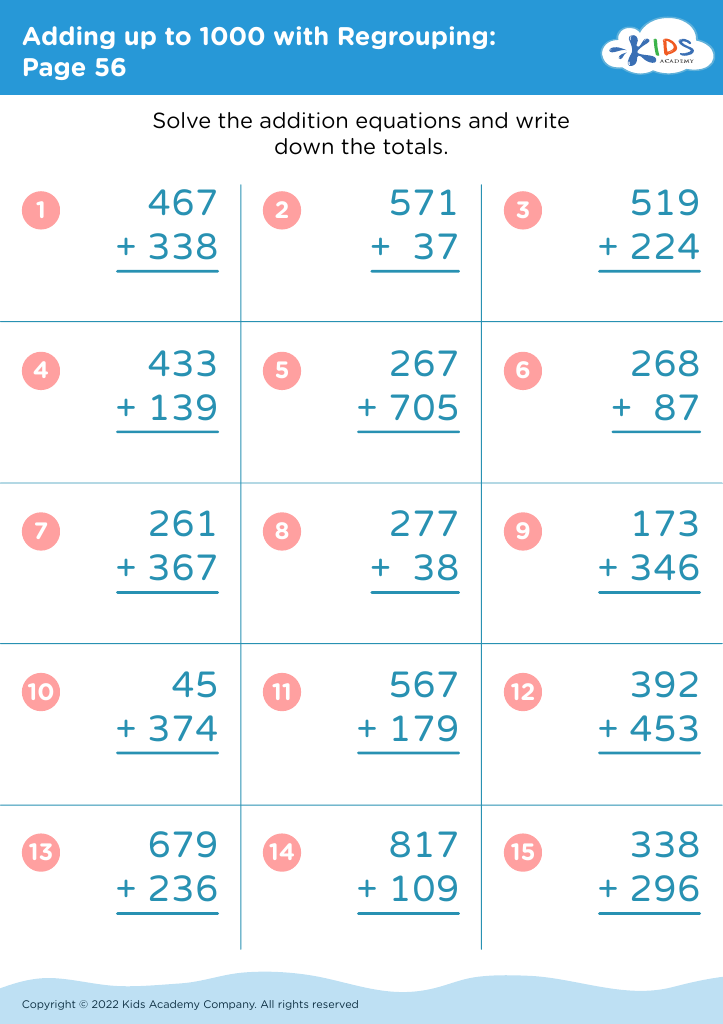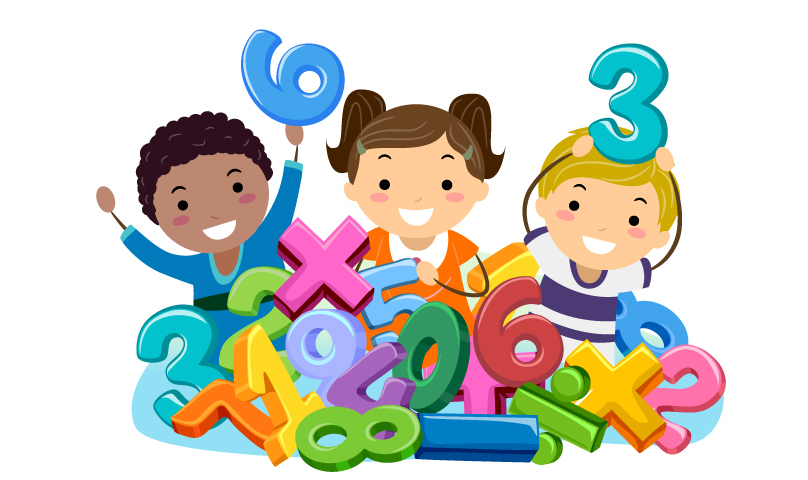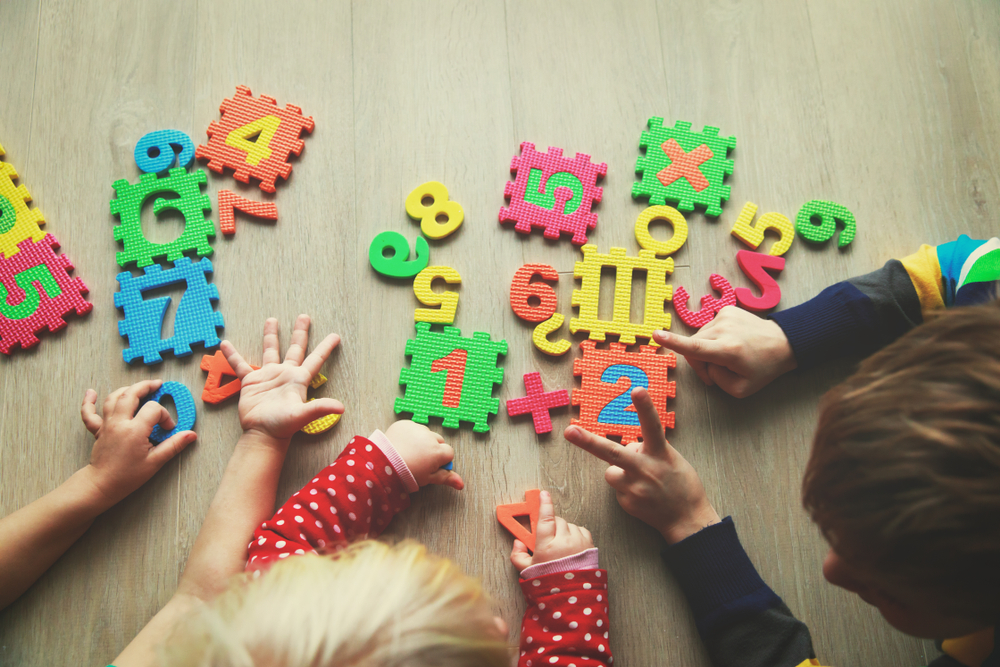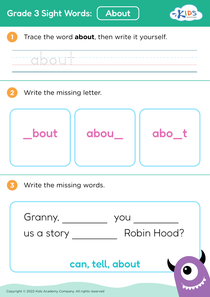Understanding fractions Grade 3 Addition Worksheets
44 filtered results
-
From - To
Explore our engaging "Understanding Fractions Grade 3 Addition Worksheets," designed to enhance students' grasp of basic fractions through fun and interactive exercises. Ideal for third graders, these worksheets provide clear visuals and relatable examples, making the concept of adding fractions accessible and enjoyable. Kids will practice crucial skills by solving problems that involve both like and unlike denominators, fostering confidence in their mathematical abilities. With a variety of worksheets available, students can master addition involving fractions, ensuring a solid foundation for future math concepts. Visit us today and equip your child with the skills they need to succeed in mathematics!
Understanding fractions is a key mathematical concept for third graders that lays the foundation for critical thinking and problem-solving skills. At this age, students are typically introduced to the idea of parts of a whole, which can be a challenging yet rewarding concept. Parents and teachers should care about this topic for several reasons.
Firstly, fractions are not just an academic concept; they are used in everyday life situations. Understanding fractions helps children manage real-world tasks like cooking, measuring, or dividing items. For example, knowing that 3/4 of a cup is less than a whole cup is essential for anyone who bakes or follows a recipe.
Additionally, proficiency in fractions sets the stage for more complex mathematical topics in later grades, such as ratios, decimals, and algebra. A strong grasp of addition and concepts related to fractions enables students to approach these advanced topics with confidence.
Teachers can nurture this understanding through engaging activities, while parents can reinforce these lessons at home. Ultimately, supporting a child’s understanding of fractions promotes a positive attitude toward math, instills curiosity, and lays a solid groundwork for lifelong learning. Being proactive in this area helps cultivate future thinkers and problem solvers.
